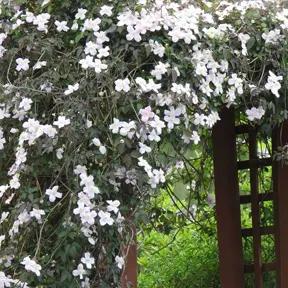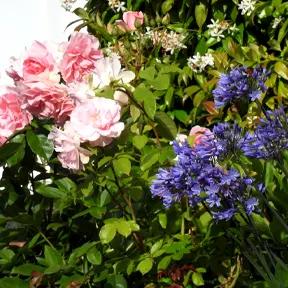'Harmony' Dwarf Iris Bulbs
- Colour: royal blue
- Height: 10-15cm
- Scent: sweetly fragrant
- Flowering: January-March
- Bulb Size: 5-6cm
- Planting Depth: 2-3 times the height of the bulb
- Planting Months: September-October
Recommended extras
Description
Harmony Iris
Iris reticulata Harmony is a fitting name for a bulb that provides some of the first notes of glorious colour in winter? It is one of a range of rockery bulbs that includes Reticulate irises, crocuses and winter aconites and snowdrops that will give you that wonderful heart-lifting feeling, with Harmony creating a symphony of intense blue in pots and borders from January to March. The blooms are deep purple-blue with a cheery yellow band at the centre of each 'fall', and a slightly ruffled tip to the central petals. They stretch up daintily from strong pale-green stems and are all the more welcome when emerging bravely from a covering of snow. Harmony is the most saturated shade of our reticulate irises, and it's sweetly scented, too: a pure delight that can't fail to make the heart sing in a cold winter.
Together in perfect harmony
For a sweet duet, pair it with snowdrops, pale Muscari or a white crocus such as Joan of Arc, and be generous with your planting drifts, to create impact the whole audience will enjoy. Evergreen grasses provide a satisfying foil: try Carex or Festuca glauca for musical movement. Given good, sharp-draining soil, it will slowly spread at the front of a sunny border, or plant to imitate reticulate irises' natural habit, giving them the sharp, stony conditions they enjoy in their native habitat of the Middle East, Turkey and Russia, in a rockery or alpine bed. Of course, pots and containers are a great spot for Harmony; be sure to place your pot somewhere you'll be able to appreciate it in winter – to be admired from a window or on the doorstep as you come in and out.
Features
- Colour: rich purple-blue with a yellow splash
- Height: 10-15cm
- Scent: sweetly fragrant
- Flowering: January-March
- Bulb Size: 5-6 cm
- Planting Depth: 2 to 3 as deep as the bulb is tall
- Planting Months: late September - early November
- Foliage: pale green
Falling for Iris reticulata
There's a little bit of jargon to get past with irises: falls, standards and beards, to name a few of the words thrown about by horticulturists. Reticulate irises shouldn't be confused with the bearded kind (these tend to be the later, taller varieties that flower in May and June, the ones Van Gogh was so fond of painting). The reticulatas are dwarf plants, with a three-petalled approach to the blooms. The larger outer petals, or 'falls', spread out and down at the tips. Each one has a spotted area in the centre. There can also be a deep yellow stripe or ridge along the central vein, a luminous landing strip for pollinators. Then there are three inner petals, which are slimmer and upward-pointing: these are the 'standards'. Altogether a most pleasing arrangement.
Reticulated means netted (reticulum is "little net" in Latin), referring to the pattern of veins on the bulbs.
Our Potted Bulbs A 1 litre pot contains approximately:- 10 small bulbs: anemones, crocus, dwarf daffodils, iris reticulata etc or
- 5 large bulbs: hyacinths, daffodils, tulips
Planting Instructions
Harmony irises love the sun but it pays to remember they bloom when the majority of shade casting shrubs and trees are leafless. In addition, the sun is low in the sky early in the year so irises can be planted in places that only become shady later in the year.
They need good drainage, so well-drained, open soil makes them happy; you'll need to add plenty of horticultural grit and/or garden sand if yours is heavy. They do well in neutral to alkaline soils. Plant the bulbs about twice as deep as they are tall and about 5cm apart. Finish off with a layer of sharp grit to discourage snails and the like.
Reticulated irises are best planted in early autumn – September to October; the relatively warm soil encourages a healthy root system. They don't need to be dug up after flowering – just leave them to multiply, and divide when congested.
It's Summer Planting Season 2025

Pot Grown & Plug Plants Delivered

Direct from the Nursery Value

No more broken plants in the post!


 Img 5.webp)
 Img 5.webp)
 Img 1.webp)
 Img 2.webp)
 Img 3.webp)
 Img 4.webp)




